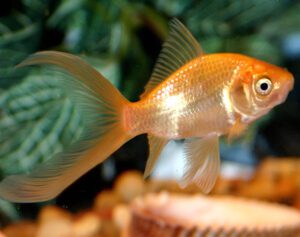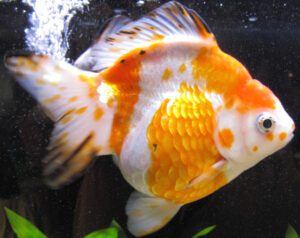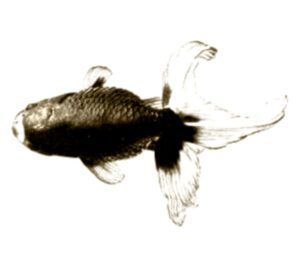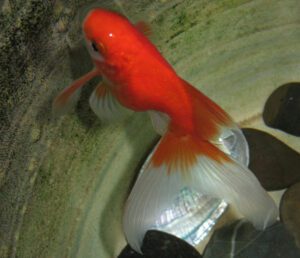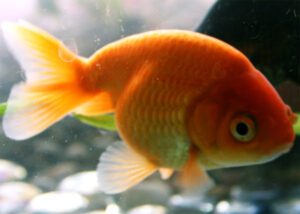The Shubunkin goldfish is a very beautiful goldfish variety. It is very hardy and single-tailed fancy goldfish with nacreous scales and a pattern known as calico. The variety is of Japanese origin and actually was created by Yoshigoro Akiyama by crossing Calico telescope eye with Common goldfish. It was probably developed in about 1900.
Blue color of the Shubunkin goldfish makes them unique looking fish. Because blue color is generally quite rare color in goldfish. The variety is called as Chuwen-chin in China. However, read some more information about this goldfish variety below.
Shubunkin Goldfish Characteristics
The Shubunkin goldfish are similar in body shape to the comet goldfish. But they are easily characterized by their nacreous scales and calico coloring. They are a single-tailed variety. Their caudal fin should be forked deeply, flowing and end in a sharp point. Generally the Shubunkin goldfish can have many colors in their patterning. These colors include yellow, oranges, grays, whites, purples, blacks, reds and browns (all set on a blue background). The Shubunkin goldfish generally become mature within their 2 to 3 years of age. And they can generally reach a length of 9 to 18 inches.[1].
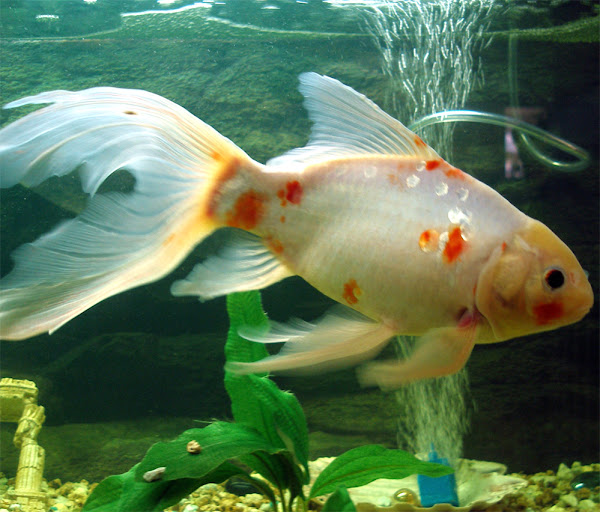
Diet
The Shubunkin goldfish are omnivorous, just like many other goldfish varieties. Generally they will eat all kinds of frozen, fresh and flake foods.
Breeding
The Shubunkin goldfish will often spawn regularly when left to their own devices in a pond. It is advisable to closely monitor pond population levels, as they can overpopulate them in a matter of months.
Uses
The Shubunkin goldfish are very beautiful fancy goldfish variety. They are raised mainly for ornamental purpose.
Special Notes
The Shubunkin goldfish are very hardy, and they are probably one of the hardiest of the goldfish variety. They can thrive well in aquarium and pond environment as well. They can live more than 10-15 years in optimum conditions. Raising them is relatively easy, as they are not picky and will readily eat what is offered in front of them.
They are very active and strong swimmers. They are very social and generally thrive in community. They are recommended for beginners. Currently there are 3 known variants of the Shubunkin goldfish. And these variants are American Shubunkins, Bristol Shubunkins and London Shubunkins. However, review full breed profile of these fish in the following table.
| Name | Shubunkin Goldfish |
| Other Names | Also called Chuwen-chin in China |
| Breed Purpose | Ornamental, pet |
| Special Notes | Very beautiful, attractive appearance, extremely hardy fish, very active, probably one of the hardiest of the goldfish variety, can thrive well in both aquarium and pond environment, 10-15 years of average lifespan, easy to raise, require less care, not picky eaters, very active and strong swimmers, very social and generally thrive in community, recommended for beginners, 3 known varieties, raised mainly for ornamental purpose |
| Size | Between 9 and 18 inches |
| Breeding Method | Artificial and natural |
| Climate Tolerance | Almost all climates |
| Body Color | Common colors are yellow, oranges, grays, whites, purples, blacks, reds and browns (all set on a blue background). |
| Rarity | Common |
| Availability | Worldwide |

